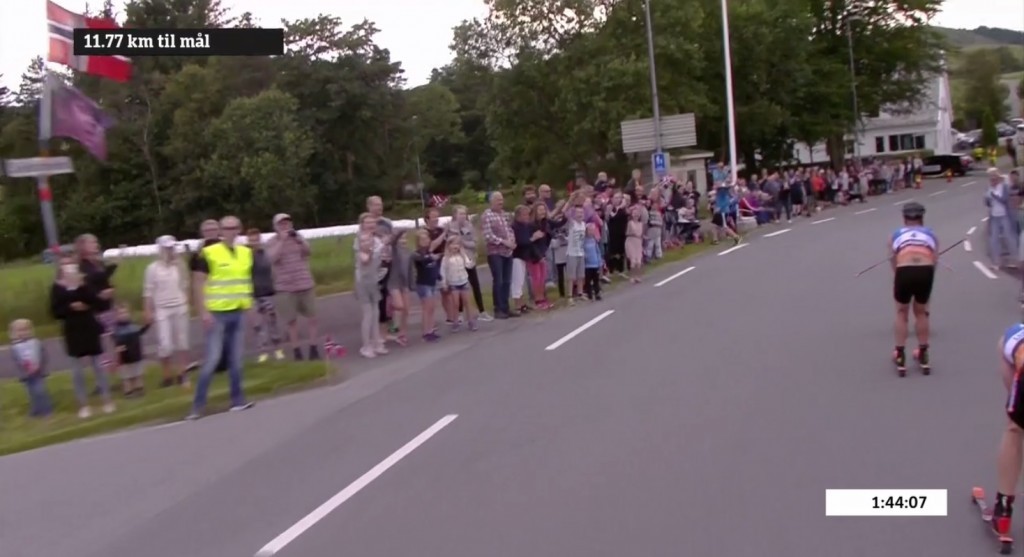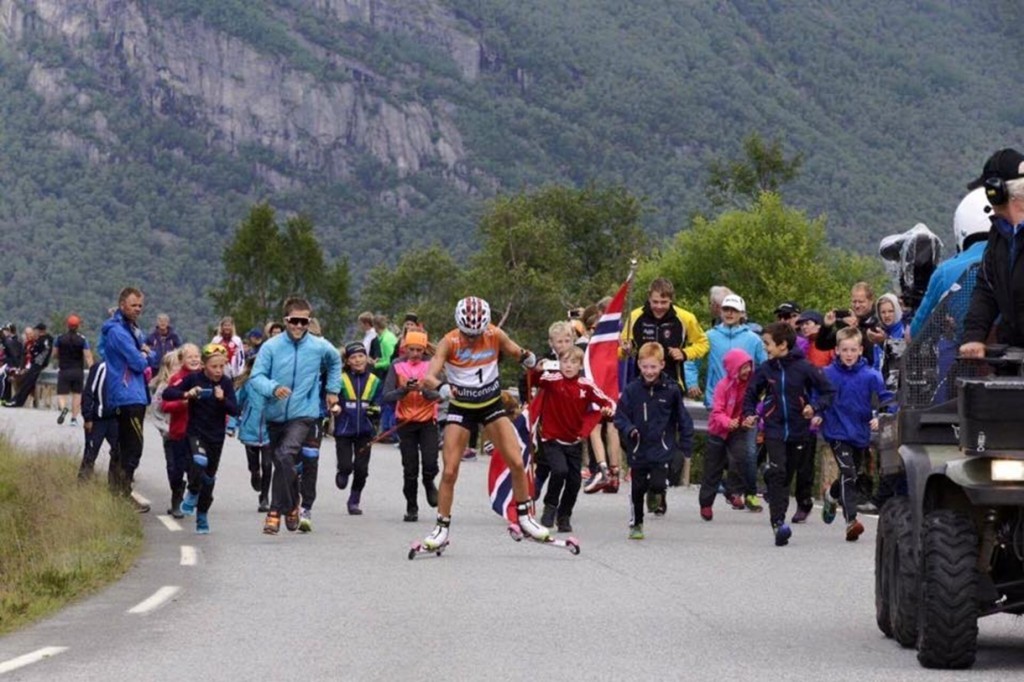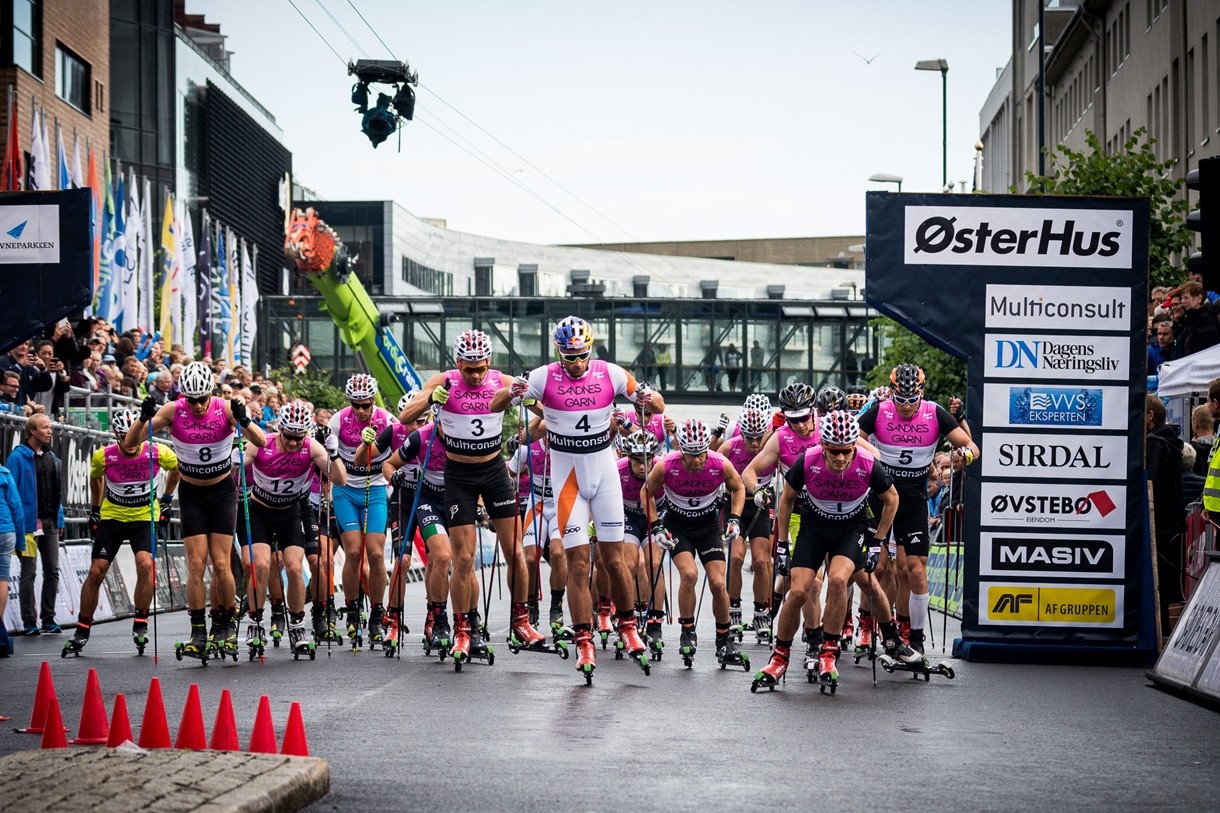
The Blink Skifestival kicked off in Norway – four days of rollersking & summer biathlon that bring together world stars in either sports
You won’t find race results here ( Martin Jonsrud Sundby won – again. And so did Astrid Øyre Slind in female race)
What we are after instead, is to try to analyze what could be gleaned from the success of Blink. Let’s face it – as of today only the Norwegians could organize and stage a rollerskiing event of this magnitude and size. How do they do it then?

– The area is Sandnes where the Blink is held is anything but a natural cross country skiing stronghold. It’s located close the seashore which makes snowfalls scarce.
– Blink was not always big – it’s grown steady through the twelve years of its existence from a relative small affair to what it is now – thanks to dedication of the organizing committee lead by Odd Langhelle and inwavering support from both the local authorities and businesses.
– The very first Blink had a budget of NOK 6 million. This year’s 4-day festival’s budget is some NOK 20 million – almost 2.2 million Euros or USD 2.5 million at current exchange rate.
– Each year roads are repaved or new built (part of the race today was held over the paths of a brand new rollerski stadium) . They even build two temporary bridges in the center of the Sandnes town for the event ( bridges are prefab construction and are kept in storage for the rest of the year, then put in place at the last minute – finished off by applying a smooth layer of asphalt on top – it’s rollerskiing, after all, has to be smooth!)
– 300 local volunters are making sure everything goes according to a plan.
– Sportsmen and women from 21 country came to race this year – many of them national teams members. Last year it was 16.

Says Blink boss Odd Langhelle ( quoted by dagsavisen.no) “To survive, we need to create values that make our sponsors to find money again in their budgets next year, it must pay off for them too. We do this by creating memories and great moments for the audience that comes”
– They obviously succeed at that – this year’s estimates put the amount of spectators at the record 70000+. Local hospitality and catering industries by all accounts appear to be happier than ever with an influx of customers.
– All races are live of Norwegian public television, NRK. Audience? Over 2 million viewers and growing.
– Another thing of note: women and men start together in classic marathon and today’s winner, Astrid Øyre Slind, has managed to beat half the men on the distance – including one and only Petter Northug. Okay, women were using faster wheels on their rollerskis – but do you really care?
– Despite being such a massive affair – world’s skiing stars in attendance, live broadcasting, tens of thousands coming to watch, Blink has managed to retain some very sweet touches – people step out of their houses in every village the race is going through ( talking marathon here), kids of ten-twelve are somehow allowed to run alongside the racers on the road hollering with excitement ( but never obstructing the race)

Conclusion: a healthy blend of local enthusiasm of all involved, rightly chosen timing and race formats plus a dedication to growing the event little by little, year after year, seems to be paying off. Well done, Blink – we all really need more events like this in the summer
PHOTOS/SCREENGRABS are courtesy of blinkfestivalen.no and NRK.no
Related Posts
- Blink Fest This Year Draws More Stars Than Ever Before.
- Petter Northug: Johaug Got Million Kronas And I Got Nothing Because I Am Already On Contract
- Role Of Individual In History. Ski History, That Is
- Arne Idland: Blink Skifestival Could Become Start Of FIS World Cup Season
- Northug Fan Goes On Epic Rant, Wakes Up Famous
